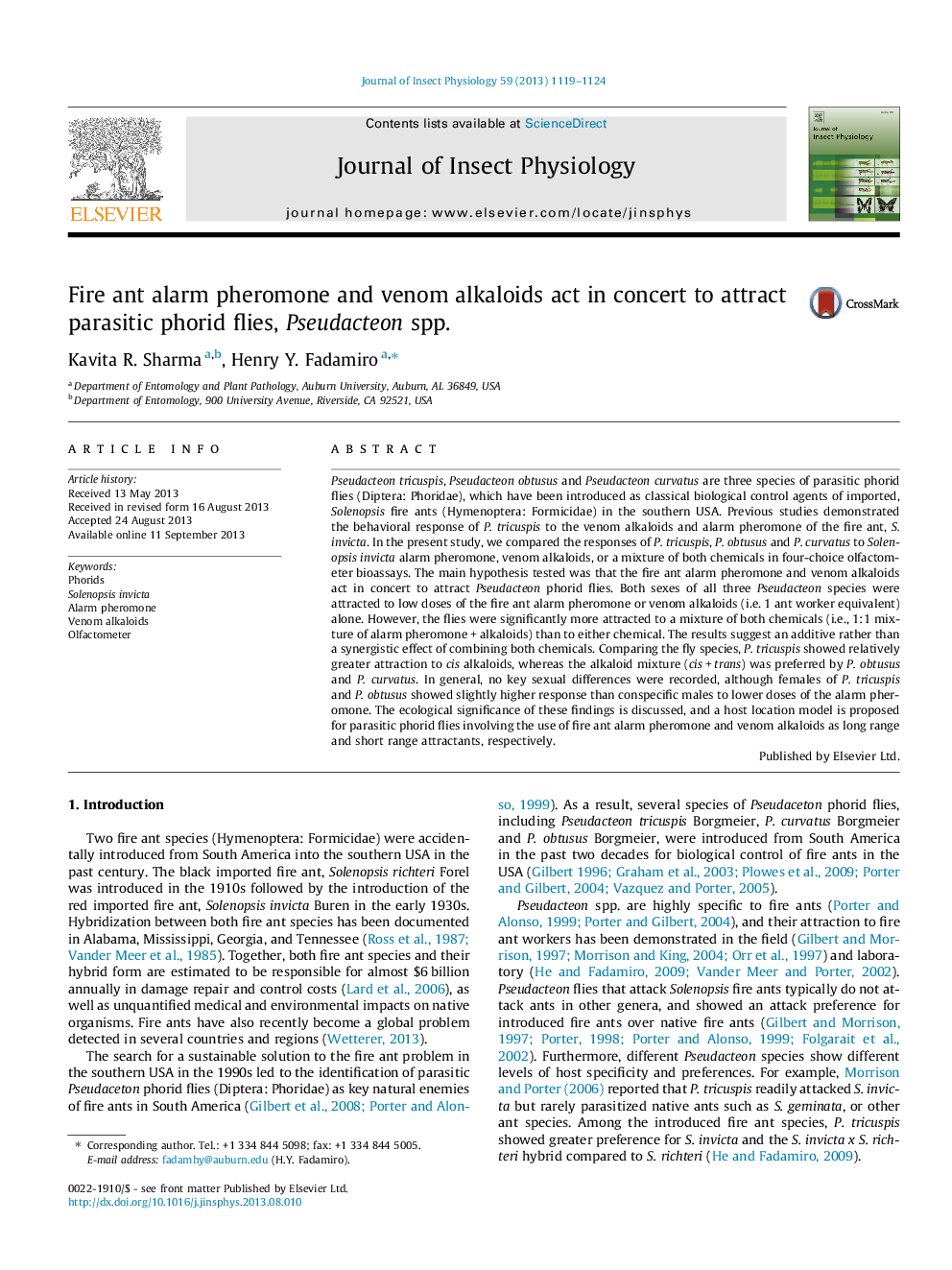| Article ID | Journal | Published Year | Pages | File Type |
|---|---|---|---|---|
| 2840476 | Journal of Insect Physiology | 2013 | 6 Pages |
•Pseudacteon phorid flies are specific parasitoids of fire ants, Solenopsis spp.•We compare responses of three Pseudacteon spp. to fire ant alarm pheromone, venom alkaloids, or a mixture of both chemicals.•Both sexes of all three Pseudacteon spp. show attraction to low doses of fire ant alarm pheromone or venom alkaloids alone.•All three species show greater attraction to a mixture of alarm pheromone and venom alkaloids than to either chemical.•We propose a model in which both chemicals act in tandem to attract Pseudacteon flies to host fire ants.
Pseudacteon tricuspis, Pseudacteon obtusus and Pseudacteon curvatus are three species of parasitic phorid flies (Diptera: Phoridae), which have been introduced as classical biological control agents of imported, Solenopsis fire ants (Hymenoptera: Formicidae) in the southern USA. Previous studies demonstrated the behavioral response of P. tricuspis to the venom alkaloids and alarm pheromone of the fire ant, S. invicta. In the present study, we compared the responses of P. tricuspis, P. obtusus and P. curvatus to Solenopsis invicta alarm pheromone, venom alkaloids, or a mixture of both chemicals in four-choice olfactometer bioassays. The main hypothesis tested was that the fire ant alarm pheromone and venom alkaloids act in concert to attract Pseudacteon phorid flies. Both sexes of all three Pseudacteon species were attracted to low doses of the fire ant alarm pheromone or venom alkaloids (i.e. 1 ant worker equivalent) alone. However, the flies were significantly more attracted to a mixture of both chemicals (i.e., 1:1 mixture of alarm pheromone + alkaloids) than to either chemical. The results suggest an additive rather than a synergistic effect of combining both chemicals. Comparing the fly species, P. tricuspis showed relatively greater attraction to cis alkaloids, whereas the alkaloid mixture (cis + trans) was preferred by P. obtusus and P. curvatus. In general, no key sexual differences were recorded, although females of P. tricuspis and P. obtusus showed slightly higher response than conspecific males to lower doses of the alarm pheromone. The ecological significance of these findings is discussed, and a host location model is proposed for parasitic phorid flies involving the use of fire ant alarm pheromone and venom alkaloids as long range and short range attractants, respectively.
Graphical abstractFigure optionsDownload full-size imageDownload as PowerPoint slide
